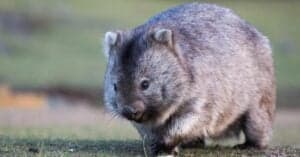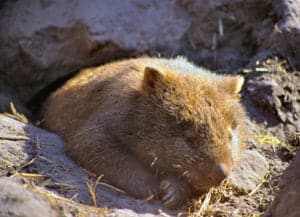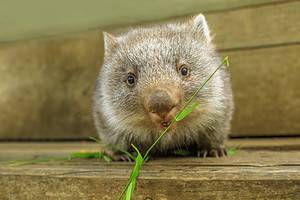Wombats are small, chunky vegetarian animals that live only in Australia. These short-legged marsupials are well-known for their expertise in digging burrow systems with their rodent-like front teeth and powerful claws. Due to the tendency of wombats to hide from danger, humans may live in the same area as them yet never see one. They are commonly mistaken for badgers because of their thick bodies with large heads, round ears, and very small eyes.
Despite their timidity, they have a relatively high threshold for aggression in certain circumstances, particularly during the breeding season when they will bite and scratch one another. These animals are strict herbivores. Their primary food is grass, and because of their dietary choices, their teeth have adapted over the years to accommodate their food choices. Keep reading to learn more about the wombat’s teeth and how they work.
Do Newly Born Wombats Have Teeth?
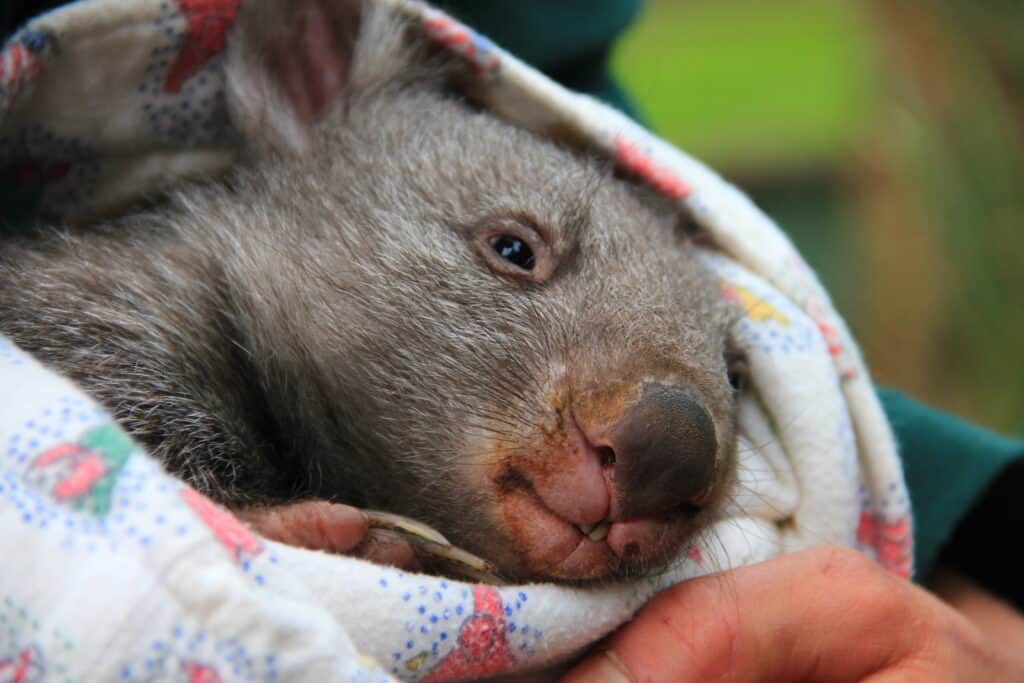
Baby wombats are born with teeth.
©Flash-ka/Shutterstock.com
Because these animals are mammals, they give birth to their young alive. However, unlike some other mammals, wombats are born with teeth. Babies are born very small and blind and have to rely on their mothers for food. Baby wombats or joeys feed on milk from their mothers for at least a whole year before they are finally weaned. During this time, they stay with their mothers, moving around with them in their pouches. Because baby wombats’ teeth are not strong enough to feed on the same thing adults eat, they feed on milk.
Adult Wombat Teeth

Wombats have 24 teeth.
©Smithy55/Shutterstock.com
Since they are mammals, one would naturally expect wombats to have a similar dentition to a few other mammals, but this is not the case. Wombats have the most unique dentition of any animal on the planet. Although the teeth of the wombat are not in any way similar to those of other marsupials, they are extremely similar to those of rodents. These animals have a total of 24 teeth. What makes the teeth of wombats so unique is that they are rootless and grow continuously. The reason for this constant growth is the wear and general damage caused by their diet of tough, fibrous grasses. Also, most of their diet contains silica which causes even more damage to their teeth.
Incisors
Wombats have four incisors. As they were developed for chewing on rough plants, their incisor teeth resemble those of rodents, such as rats and mice. The wombat is the only marsupial with only two upper and two lower incisors. Between the incisors and the remaining teeth, which are made up of one premolar and four molars on each side of each jaw, there is a significant space known as the diastema.
Like beavers, wombats have a set of powerful, massive incisors that are firmly embedded in the jaw bone. The fact that the incisors and molars are rootless and grow continuously throughout the wombat’s life makes their teeth distinctive as well. Rodents have molars with permanent roots, but they also have continuously growing incisors.
For species like the hairy-nosed wombat, the front surface of the incisors is enameled. Because the back surfaces wear away more quickly than the front ones do, the incisors are kept sharp with a chisel-like edge. As a result, the back surfaces are much softer than the front ones. The upper incisors have this trait more so than the lower ones do. On the other hand, certain species, like the bare-nosed wombat, do not have incisors that resemble chisels. Their incisors resemble those of a horse and have a flatter top surface.
Molars
Wombats have hypsodont molars for processing tough, abrasive vegetation. This means their molars are high-crowned and have enamel that extends past their gum line. These hypsodont molars make it easy for wombats to chew on their food, considering how diverse their herbivorous diets are. Wombats have four molars, and when they eat, the lower jaw shifts up and sideways so that the molar blades touch and cut the grass stems. Wombats have 16 molars. Their molars’ grinding surfaces resemble those of rodents, and a wombat consumes and chews its food similarly to a rodent.
Premolars
One notable thing about the dentition of wombats is that although it looks like they have just two teeth, they actually have 24. It is surprising to note that there is not a single canine tooth present in their mouths. As such, the space between their incisors and premolars is very wide. In all, wombats have four premolars.
What Do Wombats Eat?
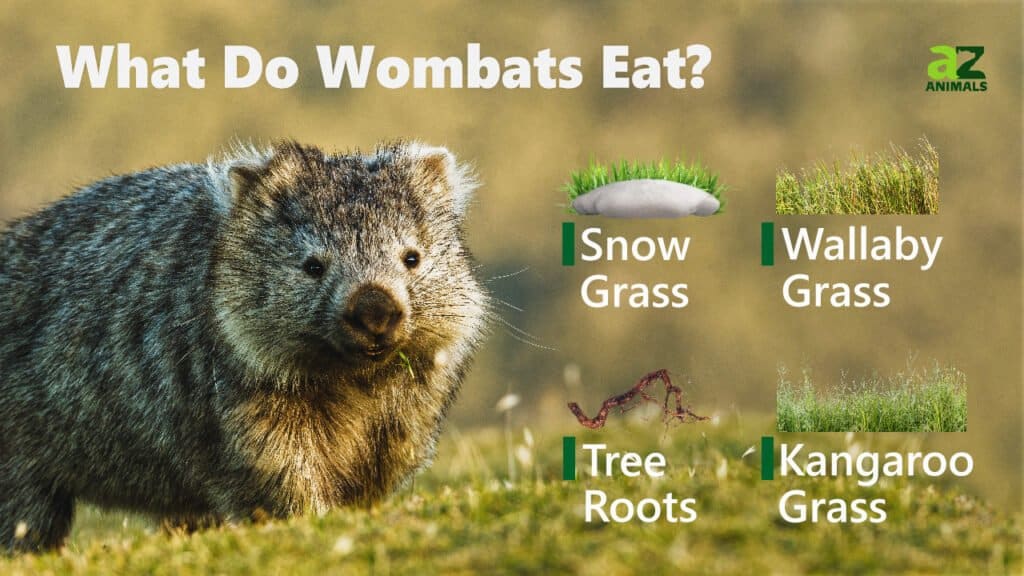
Despite being herbivores, the dentition of these animals makes it easy for them to feed on almost anything. The primary food for a wombat is grass, particularly snow grass, wallaby, and kangaroo grass. These animals are also known to feed on farm produce and other plants. It is also not uncommon to find a wombat chewing on tree bark. Because of their robust jaws and constantly erupting incisor teeth, wombats munch on tough substances like tree bark to help wear down their teeth.
Do Wombats Bite Humans?
Wombats are generally shy animals, and as such, they prefer to come out only at night. Because of this, even though they live in locations where wombats are abundant, people rarely interact with these animals. Despite their shy nature, wombats are very aggressive. Although they would usually avoid coming in contact with humans, there have been some instances where wombats have attacked people. It is worth noting that although the bites of wombats are not severe, they can lead to infections if not treated in due time.
Up Next:
Wombat Poop: Why Is Wombat Scat Cubed?
The photo featured at the top of this post is © Martin Pelanek/Shutterstock.com
Sources
- Animal Diversity Web, Available here: https://animaldiversity.org/accounts/Vombatidae/
- San Diego Zoo, Available here: https://animals.sandiegozoo.org/animals/wombat
- Facts.net, Available here: https://facts.net/wombat-facts/
Thank you for reading! Have some feedback for us? Contact the AZ Animals editorial team.



